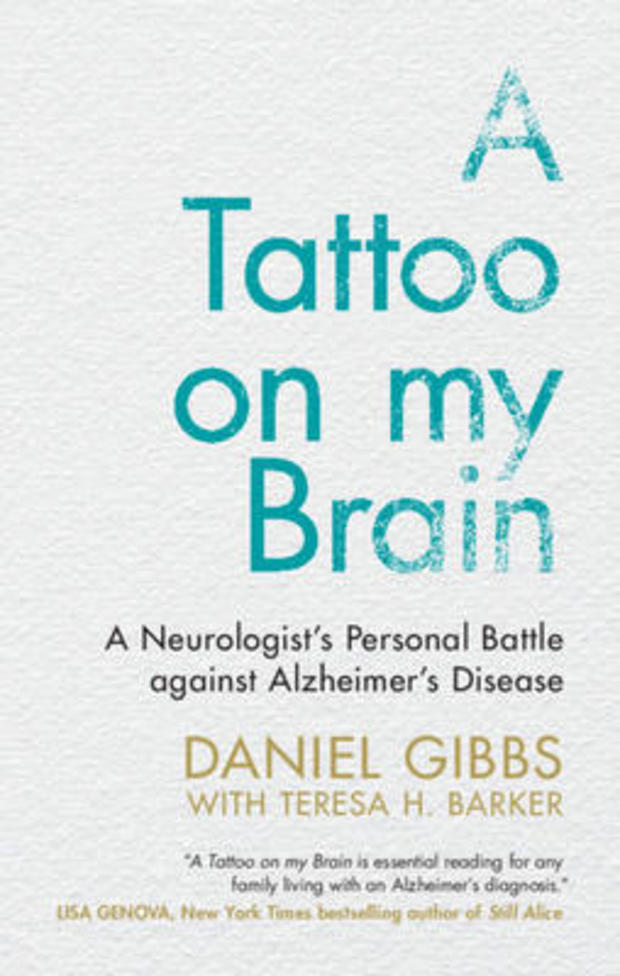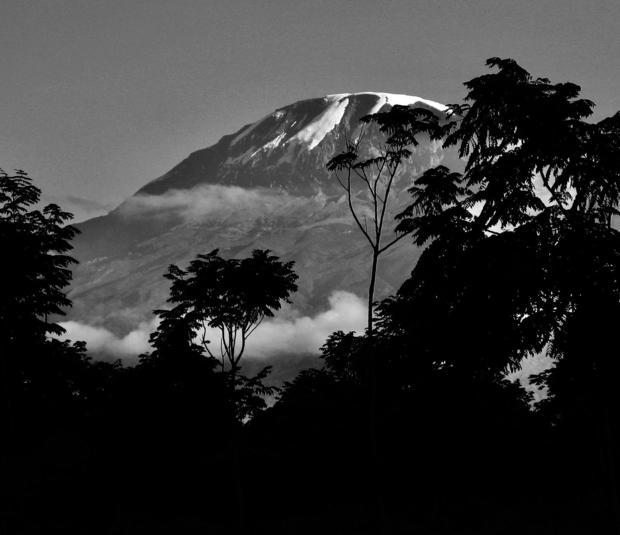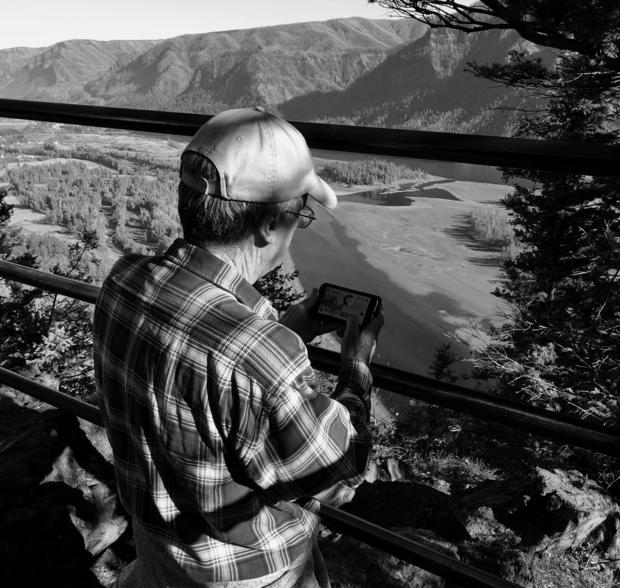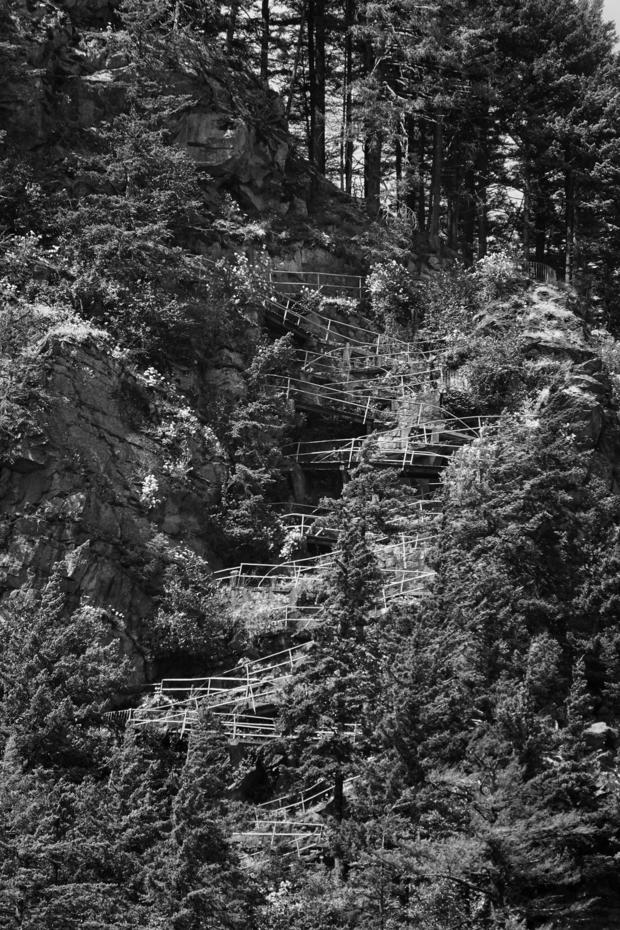Book excerpt: “A Tattoo On My Brain: A Neurologist’s Personal Battle Against Alzheimer’s Disease”
[ad_1]
Portland, Ore., neurologist Dr. Daniel Gibbs, who has spent his career caring for patients with Alzheimer’s, has now moved to studying the disease from the perspective of a patient himself. “A Tattoo On My Brain: A Neurologist’s Personal Battle Against Alzheimer’s Disease” (Cambridge University Press), written with Teresa Barker, is his memoir of recognizing the symptoms of cognitive impairment before the disease could be diagnosed, and the effect that early-stage Alzheimer’s has had on his life.
Read an excerpt below, and don’t miss Susan Spencer’s interview with Daniel Gibbs on “CBS Sunday Morning” November 28!
Cambridge University Press
Beacon Rock
A towering stump of basalt second only to the Rock of Gibraltar, Beacon Rock rises 848 feet from the Washington shore of the Columbia River, about 40 miles east of my home on the Oregon side, up a dead-end street in a woodsy hilltop neighborhood in Portland. The river feels like my second home, carrying years of memories and the promise of more good times spent on the water, first with my kids when they were kids, and now with my grandchildren. This is where they learned some lessons in resourcefulness and practical skills for life and where I learned some of the ropes myself.
Those days are numbered now, though the timeline is imprecise. Ordinarily, this would be maddening for me as a former research scientist and neurologist for whom precision is second nature. But I’m officially retired now, leaving me free to pursue any research I wish, and the whole point of my current project is to exploit this imprecise timeline confronting me and discover how to tweak it in my favor – turn the uncertainty of it to my advantage.
I have early-stage Alzheimer’s disease, the beginnings of neurodegenerative processes that will progress over time and someday kill me if something else doesn’t get me first. My interest now lies in navigating the progression of this disease in its early stages to find ways to slow it down. I want to buy myself more time on this end of the Alzheimer’s continuum. Time with my family and friends. Time to study, read and write, for professional purposes as well as pleasure. Time to enjoy walks in the woods and time on the river. The good news is, I’ve discovered that all of these pursuits intersect. Each informs the others, advancing some aspect of the larger inquiry around science or life satisfaction, or setting up for the step of insight that will. How that all fits together neurologically – how a brisk walk affects the way your brain functions, for instance – is really pretty amazing in the landscape of the brain. For now, Beacon Rock is a good place to start.
On a clear day, the Portland skyline is dwarfed by nearby Mount Hood, a sleepy volcano, and some sister peaks that thrill hiking enthusiasts. I’ve never been one of them. But, about five years ago, when I suspected that I had some very early signs of Alzheimer’s disease, my thoughts turned to the bucket list of things I wanted to do in my lifetime. Years of volunteer work as a neurologist assisting at the Kilimanjaro Christian Medical Centre (KCMC) in Tanzania had put Mt. Kilimanjaro in my sights.
About that time, on one of my continuing annual volunteer trips to the region, my wife Lois came too, and we took a day hike to Mandara Hut, considered the first full stop for camping and allowing time to acclimatize to the altitude and to the physical exertion required to complete the climb to Kilimanjaro’s summit.
One of the unique aspects of working with staff at the hospital in the foothills of Mt. Kilimanjaro is the exposure to patients with high-altitude sickness and other climbing misadventures. Mt. Kilimanjaro is just short of 20,000 feet tall, the tallest mountain in Africa, but climbing it does not require technical climbing skills. It can be done by almost anyone. But it is physically demanding and can be deadly. Each year, about 40,000 climbers attempt to summit, and on average about 6 to 10 of them die trying. About 60 percent of deaths on the mountain are due to high-altitude sickness; 30 percent to medical illnesses such as heart attack, pneumonia or appendicitis; and about 10 percent to trauma from falls or being struck by rocks. In 2013, a famous Irish mountaineer was killed by lightning while climbing the mountain. High-altitude headache occurs in about 80 percent of unacclimatized climbers who have recently reached about 10,000 feet. It can usually be relieved by good hydration, simple analgesics and allowing time for acclimatization. The next step in severity is acute mountain sickness which combines headache with loss of appetite, nausea with vomiting or diarrhea, and sleepiness. The most severe stage is high-altitude cerebral edema. In addition to the severe headache and gastrointestinal symptoms of acute mountain sickness, the climber suffers confusion, loss of coordination, trouble speaking, and lassitude progressing to coma and death if not treated immediately. It is often associated with high-altitude pulmonary edema – the accumulation of fluid in the lungs that causes difficulty breathing. This occurs in about 1 percent of climbers above 15,000 feet. Most people recover fully if immediately transported to a lower elevation, but residual changes in the eye (retinal hemorrhages) and brain (microhemorrhages) may be seen months later [citation].
It took us about four hours to climb from the Marangu trailhead to a spot at about 9,000 feet. Even at this relatively low elevation – only about halfway to the top – both of us had mild symptoms of headache and queasiness. The symptoms rapidly improved as we descended the mountain, and once we returned home I was stoked to try again next year – for the summit. Lois thought this was a seriously bad idea, considering my high risk now for potentially lethal neurological complications, such as those from altitude sickness.
From “A Tattoo On My Brain.”
Lois wouldn’t agree to go with me, so I asked my friend Henry, a seasoned trekker, if he’d join me. Henry suggested I train for it and offered to help me start to get in shape with some local hiking and climbing – perhaps eventually to summit Mount Hood, which he’d done many times. We started with modest day hikes in the Columbia River Gorge, and by the time I sensibly realized that Lois was right – Mt. Kilimanjaro was out of the question – Henry had introduced me to Beacon Rock.
At a glance, Beacon Rock looks daunting. The south face is. A 400-foot vertical climb reserved for experienced rock climbers only, it requires technical skill and equipment. But the west face, adapted more than a century ago for use by more casual weekend walkers, features wooded trails and an elaborate scaffolding of fifty-four switchbacks, some of them wide footpaths carved into the rock, others spanning wooden bridges (seventeen of them) and walkways, all lined with safety rails. If heights bother you, then it’s easy enough to look straight ahead along the broad footpaths and pause to enjoy the scenic distant vistas. It’s only scary if you look down the steep rock face.
The views from the riverbank and forest trailhead below and the summit are breathtakingly beautiful. Every step along the way is a walk through woods and rocky terrain that exist in geological time, millions of years in the making and absent any sense of urgency. There’s something calming about that for me. A day on the river and the rock quickens the senses, and for me carries years of memories and current good times spent on the water with my family and friends. Once a year now, Henry and I do the mile-plus hike up. At the summit, the bald rock narrows as it juts upward still, and the last 50 feet or so of the engineered path follows concrete steps, a 45-degree Stairmaster climb to the top.
On my most recent hike up Beacon Rock, as I reach the top I feel a little winded, definitely sweaty, but also exhilarated with the pure joy of this incredible workout in my most favorite place. I am participating in a clinical trial of a new smartphone-based cognitive test that can be taken several times a day without significant learning bias – meaning it doesn’t get easier with repetition. The goal of the trial is to see whether fluctuations in cognition can be linked to activity level. The cognitive data from the smartphone app is correlated with measures of exercise obtained through a fitness tracker. Lately, although I’ve started to notice some decline in cognition, more forgetfulness and befuddlement, I still think more clearly during and after exercise. This has been borne out in this study so far. On average, my cognitive assessment score increases 8 percent after aerobic exercise. Today, my fitness tracker says my heart rate is 131, up from a baseline of 64 at the start of the hike. After the 1.75-mile, 57-minute hike from the boat dock to the top of Beacon Rock, elevation gain 850 feet, the cognitive assessment score has increased by 15 percent.
From “A Tattoo On My Brain”
I mention this later to a friend, who laughs at my endless interest in data even on a day when I’m out in this gorgeous natural setting. But for me, this sophisticated tracking program, the real-time feedback and the fact that it’s part of a clinical trial only add to my enjoyment of the hike. Like the rock climbers who prefer the hard way up the rock face, I take pleasure in the gritty detail of the data. It’s an inward-facing vista for me I can appreciate – an encouraging one for now – without taking a thing away from the trail views.
Hikers like us don’t run into the rock climbers, whose treacherous ascent up the south face rewards them with a different viewpoint. But any way you look out at the gorge, it’s spectacular. I’m just grateful that the easier trail option exists. It’s the switchbacks that make the climb possible at all for me, however challenging it is on any given day.
From “A Tattoo On My Brain”
Sometimes the thought of the years ahead with Alzheimer’s feels especially daunting, a towering monolith, a sheer rock face. At those times, I think of Beacon Rock, the gift of switchbacks and the power of one step at a time.
From “A Tattoo On My Brain: A Neurologist’s Personal Battle Against Alzheimer’s Disease” by Daniel Gibbs, M.D., Ph.D., with Teresa H. Barker. Copyright 2021 by Daniel Gibbs. Published by Cambridge University Press. Reprinted by permission. All rights reserved.
For more info:
Download our Free App
For Breaking News & Analysis Download the Free CBS News app
[ad_2]
Source link














